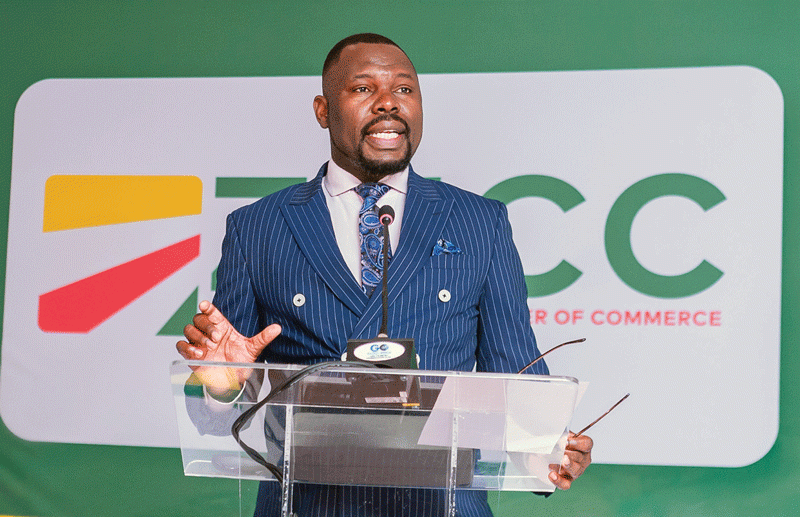
Samuel Wadzai THERE is a general consensus that there is a negative gap between the informal economy and the formal economy.
If the government is to achieve the objectives of the ‘2030 Upper-Middle Income Economy’ (U-MIE) Agenda (Vision 2030), sustainable strategies must be put in place to kick-start inclusive engagement between the two economies.
No need to emphasise the importance of ensuring that the engagements are anchored on a genuine desire to radically change the status quo.
Research should be conducted as soon as possible to ascertain whether and how the informal economy is linked to the formal economy and to the formal regulatory environment.
Moreover, the formal and the informal ends of the economic continuum are often dynamically linked. For instance, many informal enterprises have production or distribution relations with formal enterprises, supplying inputs, finished goods or services either through direct transactions or subcontracting arrangements.
Also, many formal enterprises hire wage workers under informal employment relations. For example, many part-time workers, temporary workers, and homeworkers work for formal enterprises through contracting or subcontracting arrangements.
The recent re-convergence of interest in the informal economy stems from the recognition that the informal economy is growing; is a permanent, not a short-term, phenomenon; and is a feature of modern capitalist development, not just traditional economies, associated with both growth and global integration.
For these reasons, the informal economy should be viewed not as a marginal or peripheral sector but as a basic component — the base, if you will — of the total economy.
- Chamisa under fire over US$120K donation
- Mavhunga puts DeMbare into Chibuku quarterfinals
- Pension funds bet on Cabora Bassa oilfields
- Councils defy govt fire tender directive
Keep Reading
Economic relations — of production, distribution, and employment — tend to fall at some point on a continuum between pure ‘formal’ relations (i.e., regulated and protected) at one pole and pure ‘informal’ relations (i.e., unregulated, and unprotected) at the other, with many categories in between.
Depending on their circumstances, workers and units are known to move with varying ease and speed along the continuum and/or to operate simultaneously at different points on the continuum.
Consider, for example, the self-employed garment maker, who supplements her earnings by stitching clothes under a subcontract or shifts to working on a subcontract for a firm when her customers decide they prefer ready-made garments rather than tailor-made ones. Or consider the public sector employee who has an informal job on the side.
It is an undeniable fact that very few informal enterprises, except perhaps some survival activities, operate in total isolation from formal firms.
Most source raw materials from and/or supply finished goods to formal firms either directly or through intermediate (often informal) firms.
Sourcing and supplying of goods or services can take place through individual transactions but are more likely to take place through a sub-sector network of commercial relationships or a value chain of subcontracted relationships.
In Harare for instance, there are informal home industries in Glen View Area 8 that manufacture furniture. These obtain most of their inputs from established formal businesses and supply their products to formal organisations.
To understand these linkages between informal enterprises and formal firms it is important to consider the nature of the production system through which they are linked.
This is because the nature of the linkage — specifically, the allocation of authority and risk between the informal and formal firm — varies according to the nature of the production system.
In 2012, Martha Chen did an in-depth analysis around the allocation of authority and risk between the informal and formal firm as follows:
Individual transactions: Some informal enterprises or own-account operators exchange goods and services with formal firms in what might be characterised as open or pure market exchange (in the sense of independent units transacting with each other). In such cases, the dominant firm in terms of market knowledge and power — usually the formal firm — controls the exchange or transaction. Government needs to move in quickly and address the imbalances that manifest at the individual level.
Sub-sectors: Many informal enterprises or own account operators produce and exchange goods and services with formal firms in what are called sub-sectors, that is, networks of independent units involved in the production and distribution of a particular product or commodity. In such networks, individual units are involved in a series of transactions with suppliers and customers. The terms and conditions of these transactions are governed largely by the dominant firm in specific transactions (as above) but also by the “rules of the game” for the sub-sector as a whole, which typically are determined by dominant firms in the network.
Value chains: Some informal enterprises and own account operators and, by definition, all subcontracted workers produce goods within a value chain. The terms and conditions of production in value chains are determined largely by the lead firm: in domestic chains, a large national firm and, in global value chains, a large transnational company. The major suppliers to the lead firm — and often formal firms — also help determine the terms and conditions of subcontracts to informal firms and workers down the chain.
Take the case of Sofas manufacturer at Glen View 8 market in Harare. Some of the manufacturers produce for the open market selling sofas to individual customers or to firms in the specific furniture manufacturing subsector they operate in. These furniture manufacturers operate with some authority or control and assume all the risks of production.
Others produce goods under a subcontract for a supply firm linked to a lead firm, domestic or multinational. These Glen View 8 sofas manufacturers have little (if any) authority or control over what they produce but assume much of the risk in the form of non-wage costs (workspace, equipment, and electricity), rejected goods, and delayed payments.
Actions on establishing linkages may work well in one context but not another. Innovations on linkages between formal and informal entities should be vetted through pilot and stakeholder consultations to ensure their suitability for the local context.
Options should then be tested in a new context before scaling up. This is necessary to make public and private investments into strengthening the enabling environment more successfully in the whole country.
There should be a deliberate policy intervention by the government that speaks to these backward and forward linkages both at a micro and macro levels.
What is needed, most fundamentally, is a new economic paradigm: a hybrid economic model that embraces the traditional and the modern, allowing the smallest units and least powerful workers to operate alongside the largest units and most powerful economic players.
- Wadzai is the executive director of Vendors Initiative for Social and Economic Transformation (VISET). — swadzai@visetonline.org, Twitter: @samwadzai. These weekly New Perspectives articles published in the Zimbabwe Independent are coordinated by Lovemore Kadenge, an independent consultant, past president of the Zimbabwe Economics Society and past president of the Chartered Governance & Accountancy Institute in Zimbabwe (CGI Zimbabwe). — kadenge.zes@gmail.com or mobile: +263 772 382 852.










